
Unlock a More Youthful You With Testosterone Replacement Therapy In Great Meadows, NJ
Aging is inevitable, and for many, it signals the beginning of a new chapter - one where you cross off bucket list items and live life to the fullest, on your own terms. However, for some men, aging is a horrible prospect, filled with chronic fatigue, irritability, and inability to perform in the bedroom. If you're concerned about life in middle age and beyond, we've got great news: there are easy, proven steps that you can take to help stop the negative effect of aging.
Global Life Rejuvenation was founded to give men a new lease on life - one that includes less body fat, fewer mood swings, and more energy as you age. If you're ready to look and feel younger, it's time to consider TRT (testosterone replacement therapy), and growth hormone peptides. These therapies for men are effective, safe, and customized to fit your goals, so you can keep loving life as you get older.
TRT, and growth hormone peptide therapies bridge the gap between your old life and the more vibrant, happier version of you. With a simple click or call, you can be well on your way to a brighter future. After all, you deserve to be the one in charge of your wellness and health. Now, you have the tools to do so - backed by science and applied by our team of TRT and HRT experts with more than 13 years of experience.
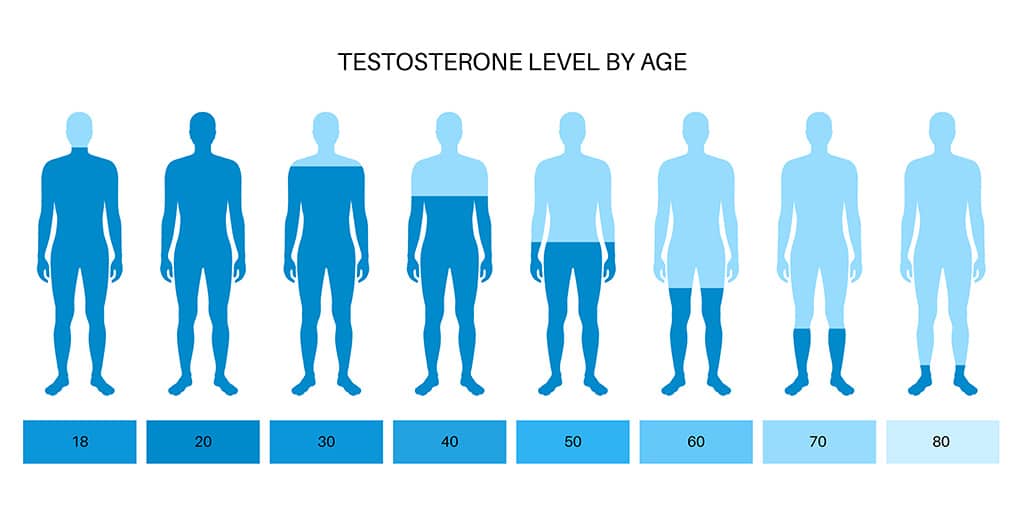
Testosterone Replacement Therapy
- Unlock A More Youthful You With Testosterone Replacement Therapy In Great Meadows, NJ
- TRT and Anti-Aging Medicine for Men
- Common Symptoms of Low Testosterone
- Benefits of TRT and Anti-Aging Medicine for Men
- Fight Back Against Male Menopause
- Reverse Aging with Growth Hormone Peptides in Great Meadows, NJ
- Your New, Youthful Lease on Life Starts Here
TRT and Anti-Aging Medicine for Men in Great Meadows, NJ
For men, getting older comes with its perks, like living life on their own terms and not having to "sweat the small stuff" day in and day out. At the same time, there are aspects of aging that men dread, like hormonal changes. Yes, you read that right – men, not just women, go through hormonal changes as they age. For men, the biggest change involves a drop in testosterone.
Lower levels of testosterone can wreak havoc on a male's mind and body and when left untreated, can result in symptoms like:
- Erectile Dysfunction
- Depression
- Irritability
- Low Sex Drive
- Hair Loss
- Less Muscle Mass
- Problems Concentrating
Those symptoms are concerning, but with testosterone replacement therapy and anti-aging medicine, many males improve their quality of life with age. The good news is that TRT and anti-aging meds aren't only reserved for "old guys." In fact, there's no magic age at which men should start thinking about hormone replacement therapy. Everyone's body is different, so if you're experiencing the above conditions in your mid-30s, TRT could be a viable solution when you consult with a doctor.

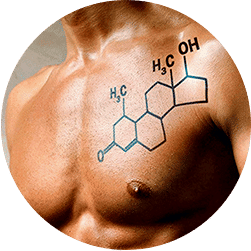
What is Testosterone?
Testosterone is a crucial hormone for men and plays an important role throughout the male lifespan. Most of a male's testosterone is produced through the testicles. Also called the male sex hormone, testosterone starts playing its part during puberty.
When a male goes through puberty, testosterone helps males develop:
- Facial Hair
- Body Hair
- Deeper Voice
- Muscle Strength
- Increased Libido
- Muscle Density
As boys turn to men and men grow older, testosterone levels deplete naturally. Sometimes, events like injuries and chronic health conditions like diabetes can lower testosterone levels. Unfortunately, when a man loses too much T, it results in hypogonadism. When this happens, the testosterone must be replaced, or the male will suffer from symptoms like muscle loss, low libido, and even depression.
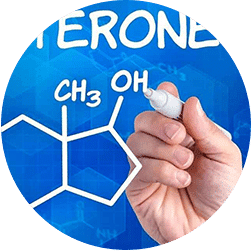
How Does TRT Work?
TRT is exactly what it sounds like: a treatment option for men that replaces testosterone so that your body regulates hormones properly and restores balance to your life. Also called androgen replacement therapy, TRT alleviates the symptoms that men experience with low T.
Originally lab-synthesized in 1935, testosterone has grown in popularity since it was produced. Today, TRT and other testosterone treatments are among the most popular prescriptions in the U.S.
Without getting too deep into the science, TRT works by giving your body the essential testosterone it needs to function correctly. As the primary androgen for both males and females, testosterone impacts many of the body's natural processes – especially those needed for overall health. For example, men with low T are more prone to serious problems like cardiovascular disease and even type-2 diabetes.
When your body quits making enough testosterone, it causes your health to suffer until a solution is presented. That's where TRT and anti-aging medicine for men can help. TRT helps balance your hormones and replenish your depleted testosterone. With time, your body will begin to heal, and many symptoms like low libido and irritability begin to diminish.

What Causes Low T?
For men, aging is the biggest contributor to lower testosterone levels, though there are other causes like obesity, drug abuse, testicular injuries, and certain prescribed medications. Sometimes, long-term health conditions like AIDS, cirrhosis of the liver, and kidney disease can lower testosterone levels.
When a man's testosterone levels drop significantly, it alters his body's ratio of estrogen and testosterone. Lower testosterone levels cause more abdominal fat, which in turn results in increased aromatase, which converts even more testosterone into estrogen.
If you're concerned that you might have low T, you're not alone. Millions of men in the U.S. feel the same way. The best way to find out if your testosterone is low is to get your levels tested.
For sustainable testosterone replacement therapy benefits, you must consult with hormone doctors and experts like those you can find at Global Life Rejuvenation. That way, you can find the root cause of your hormone problems, and our team can craft a personalized HRT plan tailored to your needs.
Common Symptoms of Low Testosterone
Are you used to blasting through a productive day and accomplishing all your daily goals? Do you find yourself losing muscle mass and the craving to be intimate with your partner? Does your partner complain about how irritable you have become? If you're not usually a curmudgeon, your body could be giving you a sign. It could be time to speak with a doctor about TRT and anti-aging medicine for men in Great Meadows, NJ.
If you're experiencing any of the following symptoms, you might be battling against low testosterone:

Low Sex Drive
One of the most common reasons that men choose TRT is because they have lost that "spark" with their partner. It's not easy for a man to hear that they're not performing like they used to. Intimacy is a powerful part of any relationship. When a once-healthy sex life dwindles, it can cause serious relationship issues.
The good news is that low libido doesn't have to be a permanent problem. TRT and anti-aging medicines help revert hormone levels back into their normal range. When this happens, many men have a more enjoyable life full of intimacy and sex drive.

Inability to Achieve and Maintain an Erection
Weak erections – it's an uncomfortable subject for many men in the U.S. to talk about. It's even worse to experience first-hand. You're in the midst of an intimate moment, and you can't do your part. Despite being perfectly normal, many men put blame and shame upon themselves when they can't achieve an erection. And while the inability to perform sexually can be caused by poor diet, obesity, and chronic health conditions, low testosterone is often a contributing factor.
Fortunately, weak erections are a treatable condition. The best way to regain your confidence and ability in bed is to speak with your doctor. Once any underlying conditions are discovered, options like TRT may be the best course of treatment.
Hair Loss

Loss of Strength and Muscle Mass
Do you find it harder and harder to work out and lift weights in the gym? Are you having problems lifting heavy items that you once had no problem lifting?
Recent studies show that when men are inactive, they lose .5% of muscle strength every year, from ages 25 to 60. After 60, muscle loss doubles every decade. While some muscle loss is common as men age, a significant portion can be tied to low testosterone levels. When a man's T levels drop, so does his muscle mass.
Testosterone is a much-needed component used in gaining and retaining muscle mass. That's why many doctors prescribe TRT Great Meadows, NJ, for men having problems with strength. One recent study found that men who increased their testosterone levels using TRT gained as much as 2.5 pounds of muscle mass.
Whether your gym performance is lacking, or you can't lift heavy items like you used to, don't blame it all on age. You could be suffering from hypogonadism.
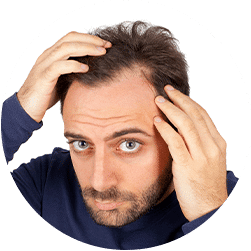
Hair Loss
If you're like millions of other men in their late 20s and 30s, dealing with hair loss is a reality you don't want to face. Closely related to testosterone decline and hormone imbalances, hair loss is distressing for many men. This common symptom is often related to a derivative of testosterone called DHT. Excess amounts of DHT cause hair follicles to halt their production, causing follicles to die.
Because hair located at the front and crown is more sensitive to DHT, it grows slower than other follicles and eventually stops growing permanently. Thankfully, TRT and anti-aging treatments for men in Great Meadows, NJ, is now available to address hair loss for good.
While it's true that you can't change your genes, you can change the effects of low testosterone on your body. Whether you're suffering from thinning hair or hair loss across your entire head, TRT and other hormone therapies can stop hair loss and even reverse the process.
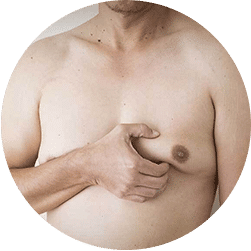
Gynecomastia
Also called "man boobs," gynecomastia is essentially the enlargement of male breast tissue. This increase in fatty tissue is often caused by hormonal imbalances and an increase in estrogen. For men, estrogen levels are elevated during andropause. Also called male menopause, andropause usually happens because of a lack of testosterone.
If you're a man between the ages of 40 and 55, and you're embarrassed by having large breasts, don't lose hope. TRT is a safe, effective way to eliminate the underlying cause of gynecomastia without invasive surgery. With a custom HRT and fitness program, you can bring your testosterone and estrogen levels back to normal before you know it.

Decreased Energy
Decreased energy was once considered a normal part of aging. Today, many doctors know better. Advances in technology and our understanding of testosterone show that low T and lack of energy often go hand-in-hand.
If you're struggling to enjoy activities like playing with your kids or hiking in a park due to lack of energy, it could be a sign of low T. Of course, getting tired is perfectly normal for any man. But if you're suffering from continual fatigue, a lack of enjoyment, or a decrease in energy, it might be time to speak with a doctor.
Whether you're having a tough time getting through your day or can't finish activities you used to love, TRT could help.

Lack of Sleep
A study from 2011 showed that men who lose a week's worth of sleep can experience lowered testosterone levels – as much as 15%, according to experts. Additional research into the topic found almost 15% of workers only get five hours of sleep (or less) per night. These findings suggest that sleep loss negatively impacts T levels and wellbeing.
The bottom line is that men who have trouble sleeping often suffer from lower testosterone levels as a result. If you find yourself exhausted at the end of the day but toss and turn all night long, you might have low T.
TRT and anti-aging medicines can restore your T levels back to normal, which can help you sleep better with proper diet and exercise.

Depression
You're feeling down about everything, and there's no solid explanation for why you're in such a crummy mood. Your daily life is great and full of success, but you can't help but feel unexcited and unmotivated. If you're experiencing symptoms like these, you may be depressed – and it may stem from low testosterone.
A research study from Munich found that men with depression also commonly had low testosterone levels. This same study also found that depressed men had cortisol levels that were 67% higher than other men. Because higher cortisol levels lead to lower levels of testosterone, the chances of severe depression increase.
Depression is a very real disorder and should always be diagnosed and treated by your doctor. One treatment option gaining in popularity is TRT for depression. Studies show that when TRT is used to restore hormone levels, men enjoy a lighter, more improved mood. That's great news for men who are depressed and have not had success with other treatments like anti-depression medicines, which alter the brain's chemistry.
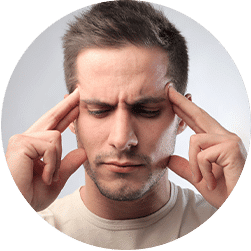
Inability to Concentrate
Ask anyone over the age of 50 how their memory is, and they'll tell you it wasn't what it used to be. Memory loss and lack of concentration occur naturally as we age – these aren't always signs of dementia or Alzheimer's.
However, what many men consider a symptom of age may be caused by low testosterone. A 2006 study found that males with low T levels performed poorly on cognitive skill tests. These results suggest that low testosterone may play a part in reducing cognitive ability. If you're having trouble staying on task or remembering what your schedule is for the day, it might not be due to your age. It might be because your testosterone levels are too low. If you're having trouble concentrating or remembering daily tasks, it could be time to talk to your doctor.
Why? The aforementioned study found that participating men experienced improved cognitive skills when using TRT.

Weight Gain
Even though today's society is more inclusive of large people, few adults enjoy gaining weight as they age. Despite their best efforts, many men just can't shed the extra pounds around their midsections, increasing their risk of heart disease and cancer.
Often, male weight gain is caused by hormone imbalances that slow the metabolism and cause weight to pile on. This phase of life is called andropause and happens when there is a lack of testosterone in the body. Couple that with high cortisol levels, and you've got a recipe for flabby guts and double chins.
Fortunately, TRT treatments and physician-led weight loss programs can correct hormone imbalances and lead to healthy weight loss for men.
Benefits of TRT and Anti-Aging Medicine for Men in Great Meadows, NJ
The benefits of hormone replacement therapy for men are numerous. TRT not only grants relief from low-T symptoms but can help give protection against age-related diseases. Additionally, doctors now recognize male testosterone as an important role in alleviating depression.
Some of the most exciting benefits of TRT can include:
- Reduction in Body Fat
- Increased Strength
- More Muscle Mass
- More Energy
- Lower Risk of Erectile Dysfunction
- Higher Sperm Production
- Healthy Reproductive Tissues
- Lower Risk of Heart Disease and Diabetes
- Lower Risk of Anxiety
- Lower Risk of Depression


Fight Back Against Male Menopause
Because men do not go through a specific period of hormonal changes like women do (called menopause), many doctors refer to "male menopause" as androgen decline. This is just another term for low testosterone, but like female menopause, the symptoms can be serious and affect your quality of life.
The best way to fight back against male menopause is with male HRT treatment from Global Life Rejuvenation. We provide the following HRT treatments for men:
- Testosterone Replacement Therapy (TRT)
- Sermorelin (Sermorelin Acetate)
- Human Growth Hormone (HGH)
Our treatment options are personalized for your body and are available as creams, gels, injectables, and implantable pellets. To find out if testosterone replacement therapy is safe for you, contact Global Life Rejuvenation today to schedule your comprehensive testing and anti-aging treatment consultation.
Reverse Aging with Growth Hormone Peptides in Great Meadows, NJ
Growth hormone peptides are an innovative therapy that boosts the natural human growth hormone production in a person's body. These exciting treatment options help slow down the aging process and give you a chance at restoring your youth.
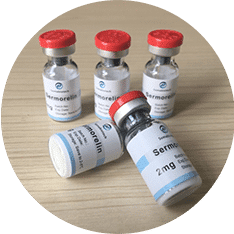
What is Sermorelin?
Sermorelin is a synthetic hormone peptide, like GHRH, which triggers the release of growth hormones. When used under the care of a qualified physician, Sermorelin can help you lose weight, increase your energy levels, and help you feel much younger.

Benefits of Sermorelin
Human growth hormone (HGH) therapy has been used for years to treat hormone deficiencies. Unlike HGH, which directly replaces declining human growth hormone levels, Sermorelin addresses the underlying cause of decreased HGH, stimulating the pituitary gland naturally. This approach keeps the mechanisms of growth hormone production active.
Benefits of Sermorelin include:
- Better Immune Function
- Improved Physical Performance
- More Growth Hormone Production
- Less Body Fat
- Build More Lean Muscle
- Better Sleep
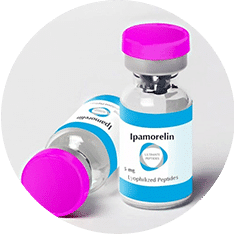
What is Ipamorelin?
Ipamorelin helps to release growth hormones in a person's body by mimicking a peptide called ghrelin. Ghrelin is one of three hormones which work together to regulate the growth hormone levels released by the pituitary gland. Because Ipamorelin stimulates the body to produce growth hormone, your body won't stop its natural growth hormone production, which occurs with synthetic HGH.
Ipamorelin causes growth hormone secretion that resembles natural release patterns rather than being constantly elevated from HGH. Because ipamorelin stimulates the natural production of growth hormone, our patients can use this treatment long-term with fewer health risks.

Benefits of Ipamorelin
One of the biggest benefits of Ipamorelin is that it is suitable for both men and women. It provides significant short and long-term benefits in age management therapies, boosting patients' overall health, wellbeing, and outlook on life. When growth hormone is produced by the pituitary gland using Ipamorelin, clients report amazing benefits.
Some of those benefits include:
- Powerful Anti-Aging Properties
- More Muscle Mass
- Less Unsightly Body Fat
- Deep, Restful Sleep
- Increased Athletic Performance
- More Energy
- Less Recovery Time for Training Sessions and Injuries
- Enhanced Overall Wellness and Health
- No Significant Increase in Cortisol
Your New, Youthful Lease on Life Starts Here
Whether you are considering our TRT services, HRT for women, or our growth hormone peptide services, we are here to help. The first step to turning back the hand of time starts by contacting Global Life Rejuvenation.
Our friendly, knowledgeable TRT and HRT experts can help answer your questions and walk you through our procedures. From there, we'll figure out which treatments are right for you. Before you know it, you'll be well on your way to looking and feeling better than you have in years!
 866-793-9933
866-793-9933
Request a Consultation
Latest News in Great Meadows, NJ
A Kumbaya Moment: The Annual Trek From NJ to Pa. for 3,000+ Pilgrims
Karen Araizahttps://www.nbcphiladelphia.com/news/local/walking-pilgrimage-great-meadows-doylestown-czestochowa-2015-franciscan-friars/1998432/
My 18-year-old son dropped me off. Readily. I’m the scab he picks at lately. Maybe because I left the house with only 50 cents, forgetting we’d take the Pennsylvania Turnpike. Or that my debit card was declined at the Wawa for a $16 dollar purchase which included his late-in-the-day lunch. Or my “Don’t worry, I’ll figure it out, honey,” answer when he asked if I knew where I was staying for the night. I did get a hug and a genuine, “Have fun, Mom,” before I was the size of a gnat in his rearvie...
My 18-year-old son dropped me off. Readily. I’m the scab he picks at lately. Maybe because I left the house with only 50 cents, forgetting we’d take the Pennsylvania Turnpike. Or that my debit card was declined at the Wawa for a $16 dollar purchase which included his late-in-the-day lunch. Or my “Don’t worry, I’ll figure it out, honey,” answer when he asked if I knew where I was staying for the night. I did get a hug and a genuine, “Have fun, Mom,” before I was the size of a gnat in his rearview mirror.
Above the sea of porta-potties, and clanging of oversized pots in the parking lot of Saints Peter & Paul Church in Great Meadows, New Jersey, I heard the screech of music coming through a loudspeaker three guys were tweaking near a hippie-looking van with a sign atop — CAUTION WALKING PILGRIMS.
I walked up the hill to meet Brother Simon, who sports a bushy auburn-red beard, shaved head and big, mischievous smile. He was our guide on this trek. I was here to report on the event, as a participant. No Alcohol. No talking after a certain time at night. No doubt that at some point along the way, the most common question might become, “Where does it hurt?”
The Walking Pilgrimage from Great Meadows to Doylestown began 28 years ago with a handful of Polish Immigrants. This year over 3,000 pilgrims made the trek, which is the largest number of people to participate.
You can discover a lot walking 57.5 miles in four days with a crowd that swells to over 3,000 people.
I met a young woman from India, 28, who is three years into her arranged marriage and trying to grow into love without one day looking in the mirror and seeing someone she doesn’t recognize. A woman in her 50s who married her high school sweetheart, had 8 kids, launched a career when her two oldest went off to college and is now trying to figure out a better work-life balance. A nurse who wouldn’t tell me her age, but did tell me she was once engaged to be married, took a second job helping some neighborhood nuns so she could save up enough money to buy a car. She ditched the boy and joined the convent. A 22-year-old man who is taking a break from college because life in our country tends to move at such a rapid-fire pace, it’s sometimes tough to carve out enough time to think about what you really want to do with your life.
The Walking Pilgrimage from Great Meadows to Doylestown is a spiritual and a social event that brings together family, friends and people who reconnect every year just for the walk, which takes places in August — rain, shine, sweltering heat, whatever the weather.
People come mostly from communities connected to Saints Peter & Paul Church and from within distances you can reach on one tank of gas, although some pilgrims ventured from as far away as California, Colorado and Canada. This is the 28th year pilgrims marched to Doylestown, Pennsylvania where the American Czestochowa, or National Shrine of Our Lady of Czestochowa is located. Our Lady of Czestochowa is considered the most sacred icon in Poland and the tradition of making pilgrimages to the small church where she is kept dates back by some accounts to the 14th century.
Many of the pilgrims on this walk have a strong emotional connection to the event. A lot of them emigrated from Poland fairly recently — either before the martial law of the 1980s or they came over in the early 90s, after communism fell, but while expectations of the country’s future were uncertain. The pilgrimage is a way to preserve this tradition of their homeland. Pulling it off logistically each year is a challenge and work behind the scenes is impressive.
How To Pull Off a Pilgrimage
For many of the people I met, the walk was a time for reflection — a “soul cleansing,” Angelica Terepka, 26, told me. She and twin sister Patricia have walked for the last 12 years.
Robert Pluta, 40, runs a restaurant in Lawrenceville, New Jersey. Over the year, he keeps a mental list of the top things in life he wants to talk about with Father Mariusz, who he considers a good friend and also spiritual adviser. The walk for him is a metaphor for life.
Not everyone makes it. Ron Rinehart walks because he’s grateful for a truly life-changing experience he had 27 years ago when he was living under a bridge in Cleveland, Ohio. This year he may have been a bit too ambitious. Ron, 67, was nursing a stress fracture in one of his heels and the loss of a toenail after finishing The Camino about a month ago. It’s a pilgrimage the stretches nearly 500 miles from France across Spain. I didn’t see Ron after Day 1.
Over the four days, which began Thursday, Aug. 6, we walked our way through woods, parks, and neighborhoods in Warren and Hunterdon Counties, N.J. and then crossed into Bucks County, Pennsylvania. The first two days are the toughest because you’re covering the most distance — 17.5 and 19.5 miles. Stops along the way are built in for eating, bathroom and water breaks. You can also pop over to the Blister Sisters who will dress your wounds and try to treat whatever hurts.
Along the way each day, pilgrims sang, led by Christian musician Luke Spehar who walked with his wife Elizabeth. She's 6 months pregnant with their first child. We listened to recorded talks by Archbishop Fulton J. Sheen who from the 1930s through the 50s had a popular Christian radio show and then television hour. We sang what’s called The Chaplet of Divine Mercy rosary each day at 3 p.m., which is a sacred time one of the walkers told me, because it’s when Jesus was crucified.
With a new burst of energy found during longer stops for lunch or extended breaks after walking the most physically challenging parts of the route, there were fun moments of impromptu dancing and singing. Each night included a church service — Mass and on the last night, Adoration of the Blessed Sacrament, which was followed by a little late-night dancing. The upbeat Christian music ended, replaced by a chorus of night insect noises and a few snoring hikers.
I did encounter a few surprises covering 57.5 miles in four days — I met only one person in our group who plans to see Pope Francis when he comes to the U.S. Most of the walkers I talked to about the pope seemed to feel with all the restrictions, street closings, ticketing, etc., it wasn’t’ worth the trouble.
“I’d rather pay to go to the Vatican,” one walker told me. “At least there I can get close enough to see him.” Conversations I heard and overheard on the hike about Pope Francis and other topics, left me thinking even though most of the people in our English-speaking group were walking primarily because religion is a big part of their lives, we were all connected by common themes tied to building better relationships, growing religiously or spiritually, and a desire to help others.
The highlight for me, personally, was getting to know some of the men in gray tunics. My fascination with The Franciscan Friars of the Renewal grew to a feeling of awe by the time the walk ended. They are good, good, benevolent, happy people. From what I could tell, the Friars organized the walking part of the event, led by Brother Simon, who I think would agree they’re so good at living in the moment, if you’re a control freak or have a need to know in great detail what’s next on the agenda or around the corner you may think they’re a little haphazard or loose on the planning. They are, but it all works out. The Friars thread through the line of pilgrims, sharing jokes and stories in lighter moments and hearing confession at all times of the day and late into the night. I heard story after story after story about how the Friars had helped either the person I was talking with or someone very close to them. They are a force, but not in a forceful way. I don’t know how else to explain it, but for me it was worth every mile just to have that experience.
On Day 4, I awoke to the sound of a mother hushingly scolding her child, in Polish. It took me a moment to remember where I was, but once again sleep had eased the stiffness in my legs, the aches in my lower back and shoulder. The chatter of the morning at the Haring Brothers Farm in Doylestown got louder as pilgrims emerged to brush their teeth and freshen up. Sunday morning’s routine was less hectic. Breaking camp for the last time, walkers — even those blistered and bruised — seem to embrace the day with a sense of accomplishment and also anticipation of the final Mass. Some pilgrims packed up their hiking gear and put on their church clothes for the last 5 miles.
The pilgrimage ended with a challenging walk uphill leading right into the grounds of Our Lady of Czestochowa shrine in Doylestown, a welcome splash of Holy Water and celebratory Mass.
When Mass was over, I watched old friends and new friends say their goodbyes as I collected my backpack, work gear and camping gear. I heard the shuffle of sandals as I started to head down the stairs to catch my ride home at the front entrance of the shrine. I turned around to see Brother Simon coming toward me, arms outstretched with that big, mischievous smile. “Did you get everything you needed?”
Yes, Brother Simon, I did. Thank you.
Di Ionno: The 'best farmland in N.J.' destroyed by recent floodwaters
Mark Di Ionnohttps://www.nj.com/njv_mark_diionno/2011/10/di_ionno_the_best_farmland_in.html
Robert Sciarrino/The Star-LedgerWARREN COUNTY — A postcard-like vista off Hope Road in Warren County shows an expansive valley lake surrounded by mountains. The long humpback of Allamuchy is off to the north and east, the three peaks of Jenny Jump hover just west. The valley is mostly known as Great Meadows, but is also called the Pequest River valley. The soil there is known as black muck; always moist, high in nutrients and good for growing.It’...
Robert Sciarrino/The Star-Ledger
WARREN COUNTY — A postcard-like vista off Hope Road in Warren County shows an expansive valley lake surrounded by mountains. The long humpback of Allamuchy is off to the north and east, the three peaks of Jenny Jump hover just west. The valley is mostly known as Great Meadows, but is also called the Pequest River valley. The soil there is known as black muck; always moist, high in nutrients and good for growing.
It’s best farmland in New Jersey," says Dennis Pryslak, who owns or farms almost 2,000 acres in the valley.
The lake has no name, because there is no lake. It is flood water, six to eight feet high in some places, that has covered all that black soil and wiped out the harvest crop for Pryslak and his neighbors at Empire Farms and Liberty Sod Farms. The water came cascading down from Jenny Jump and rising from the Pequest flood plain and at one point covered about 1,800 acres of the valley.
This most recent flood began last week, when storms over this part of West Jersey added another six inches of rain on land that has tried to absorb almost three feet of rain since August 1. New Jersey’s gentle trout streams, like the Musconetcong, the Pequest and the South Branch swept away a half dozen cars in Flanders. Roads were closed from Hackettstown to Califon.
Houses with water up to windows, trees toppled from roots up, and people paddling down Main Street, are the public images of floods. In the hinterlands, an equally deep but quieter misery takes places. The land is ravaged. Soil is eroded, falling branches smash smaller trees, loose rock pummels ground plants and pools of water drown them, and farm fields are reduced to mud, or submerged. The food on those fields can’t be saved.
"We’re seeing corn flattened, and apple drop," said Lindsay Caragher, the West Jersey counties director for the United States Department of Agriculture.
"We get a variety of molds and blights and rot," she said. "Every crop has a specific problem or disease."
There is no FEMA for farmers, or small business loans that in-town businesses get. The USDA handles everything from crop insurance to emergency loans, with interest rates at 3.75 percent. But few handouts. While people in Manville, Bound Brook, Wayne and Little Falls may be getting checks already for damaged households, the process of evaluating farm damage takes longer.
"They (the USDA) say they’re still getting their program in place," said Pryslak.
The flooding couldn’t have come at a worse time for farmers. Harvest time.
Tony DeMarcky, who operates a local dragstrip called Island Raceway in Great Meadows, lost all 18 acres of sod product, and a months of weekends at the track, which is under two feet of water.
Robert Sciarrino/The Star-Ledger
Pryslak a 44 year-old second generation farmer, grows 40 varieties of vegetables and herbs. He got his cilantro out before September, but most everything else was ruined.
"I’d say we saved 5 percent of our crop," he said in the trucking depot of his operation. The loading docks were empty and the stainless steel trailers with the word PRYSLAK emblazoned in bright yellow were parked.
"Right now, we’d been shipping stuff like crazy. I’d have 10 trucks out, delivering to customers as far away as Florida," he said. "Instead, I got one on the road."
At this time of year, he’d have 40 workers in the fields and in warehouse, picking and processing tons of cabbage, corn, lettuce and other leafy vegetables, peppers and squash.
"Now, I have 14," he said. "That’s a lot of people without work."
His tractors are idle, some stranded on islands of high ground, except for two that powered flood pumps, that suck the water from one flooded plain and gush it out to another.
"We’re really just pushing it around because it’s still coming in," he said. He was trying to save a sod pasture on slightly higher ground, by drying out the adjoining pasture. "You do what you can, but pretty much, you’re helpless. That’s how you feel in the whole thing. Helpless. You’re out here alone."
The loss isn’t just in product. It’s in whole investment. The seed and fertilizer to grow produce, and the water and labor costs to nurture it have all been washed away.
"There’s no return on what you laid out," he said. "It’s pretty much a wasted year."
Related coverage:
• Rain causes flooding, traffic problems in northwestern N.J.
If you purchase a product or register for an account through a link on our site, we may receive compensation. By using this site, you consent to our User Agreement and agree that your clicks, interactions, and personal information may be collected, recorded, and/or stored by us and social media and other third-party partners in accordance with our Privacy Policy.
2 Warren County elementary schools may be closed as districts search for savings
Steve Novakhttps://www.lehighvalleylive.com/warren-county/2019/03/2-warren-county-elementary-schools-may-be-closed-as-districts-search-for-savings.html
Students may be shuffled around next year in two Warren County school districts that are each now deciding the fates of their elementary schools.Boards of education in Belvidere and Great Meadows were both scheduled to decide last week if they would close schools, but both...
Students may be shuffled around next year in two Warren County school districts that are each now deciding the fates of their elementary schools.
Boards of education in Belvidere and Great Meadows were both scheduled to decide last week if they would close schools, but both delayed votes.
"Nobody wants to lose a school," Great Meadows Superintendent David Mango said Wednesday. "But the reality is ... how do you maintain what you have?"
Belvidere: Third Street Elementary
A school board vote to close the Third Street Elementary School had been scheduled for Wednesday evening but was postponed because school board members wanted more information, Superintendent Chris Carrubba said.
The school had 104 students enrolled in the 2017-18 school year, taught by eight certified teachers, according to data from the New Jersey Department of Education.
The district’s other elementary school had 149 students, and there were 458 attending Belvidere High School that year.
Carrubba said a fact sheet on the proposal would soon be posted to the district’s website.
Great Meadows: Liberty Elementary
Of the three schools in the Great Meadows Regional School District, Liberty Elementary School is the odd one out.
The school is in Liberty Township, separate from Central Elementary and the Great Meadows Middle School that share a campus three mile away in Independence Township.
The district has contemplated streamlining its facilities since at least 2017, when declining enrollment and tax revenue led to studies of its operations, according to Mango, the superintendent the district shares with neighboring Hackettstown. It became more urgent when the state recently proposed aid cuts, Mango said in a December newsletter.
The choice became between the two elementary schools, and officials focused on the isolated one.
The school board had planned a vote this week, but postponed it until March 19 to see if Gov. Phil Murphy announces any changes to New Jersey's school funding plan.
Liberty had 207 students and 24 certified teachers in the 2017-18 school year.
If the district goes through with closing the school, Central Elementary will become a pre-K-to-3 school and the middle school will host grades 4 to 8. Great Meadows students attend Hackettstown Regional High School.
Mango said it was too soon to say what will happen with staff and administration but that the district wants “to limit the impact.”
Woman kayaks entire span of Passaic River, then does it again with a film crew
William Westhovenhttps://www.dailyrecord.com/story/news/2021/10/18/american-river-documentary-passaic-river-nj-kayak-mary-bruno/6100696001/
Reflecting much of the North Jersey territory it crosses, the Passaic River flows out of the pristine, preserved wilderness of the Great Swamp in suburban Chatham Township, then winds north, south, east and west on its way over the Great Falls in Paterson before spilling into a Superfund site in Newark Bay.Navigating all 80 miles is not for amateurs. Mary Bruno kayaked the river end to end over four days in 2008 in her late 50s. She wrote about her experience in a book.Ten years later, the former North Arlington ...
Reflecting much of the North Jersey territory it crosses, the Passaic River flows out of the pristine, preserved wilderness of the Great Swamp in suburban Chatham Township, then winds north, south, east and west on its way over the Great Falls in Paterson before spilling into a Superfund site in Newark Bay.
Navigating all 80 miles is not for amateurs. Mary Bruno kayaked the river end to end over four days in 2008 in her late 50s. She wrote about her experience in a book.
Ten years later, the former North Arlington resident did it again at the invitation of Chatham filmmaker Scott Morris.
The result, three years in the making, is a new full-length documentary, "American River," scheduled to premiere before two sellout audiences next week at the Montclair Film Festival.
"By the end of the film, you get this great story arc from what starts with a peaceful Great Swamp," Morris said, and "ends with the worst polluted river in America, an EPA site."
Born in 1952, Bruno grew up in North Arlington along the polluted Lower Valley region of the river, just north of its end in the Newark Bay. She returned to the river in 2008 as an experienced kayaker, navigating the entire span with her river guide and friend, Carl Alderson.
Bruno captured the experience in her 2012 book, "An American River: From Paradise to Superfund, Afloat on New Jersey's Passaic."
"Looking back as an adult, there was this river that was a scary presence in my life, but nobody really talked about it, or questioned why that was the case," Bruno said. "Nobody seemed to be interested in doing anything about it."
Significant cleanup efforts have been made since her first trip and the book that caught Morris' attention while conducting research for another documentary, "Saving the Great Swamp: Battle to Defeat The Jetport," currently distributed by American Public Television.
Morris was captivated by Bruno's book, which contained "personal stories as well as an adventure, so I thought it had all the elements of a really engaging documentary," he said.
After meeting to discuss film rights to her book, Bruno said she came to trust Morris with her "baby," but was surprised when he asked her to paddle the river again, this time with him and a 15-member film crew following her every step of the way,
"I assumed I would be a consultant, do some introductions here and there," Bruno said. "It never occurred to me I would be in the film."
She agreed when her "paddling buddy" Alderson agreed to do it with her.
"I called Carl and he was like 'Yeah! Let's do it!' " she recalled. "Then it became a whole different project and I was all-in."
Mounting GoPro cameras on the kayaks and wiring them for sound, Morris was delighted with the personalities, humor and chemistry he picked up from the Bruno-Alderson team.
The second trip was also completed in four days over a two-week span.
"There are no outfitters on the Passaic River, but Carl knows every inch of it," Morris said. "Where to put in, take out and be careful. But it wasn't until we actually got out on the river that they blossomed. Their personalities were so much fun. There was a lot of humor. They became the centerpiece of the story in more ways than one."
A Chatham resident, Morris said that even on his more-idyllic end of the river, area residents took it for granted.
"I lived just a few blocks from the river and hardly gave it a second thought," Morris said. "Nobody talked about it. Nobody cared about it."
Bruno said the goal of the book and the film is to "reintroduce the river to people and make people care about it," she said.
The river's knot-twist route is complicated by fallen trees, waterfalls and other impediments that often require kayakers to walk, climb or move a tree branch. And this time, Bruno and Alderson had to coordinate their action with the documentary team.
"We had 10 cameras, GoPros on the boats, more cameras traveling alongside in a camera boat," Morris said. "We had drones. We had land-based cameras that leap-frogged ahead. It was an incredibly ambitious undertaking and quite an enjoyable change for me."
"It's amazing how all the pieces came together," Bruno said.
Beyond the action and adventure on the river, the cast and crew stopped to interview people along the way. A necessary interruption of the journey at the Great Falls in Paterson included a visit to the landmark hot dog institution Libby's Lunch, where they chatted with the manager and local patrons. It closed in 2020.
All of the dozens of riverside residents, government officials and river advocates appearing in the film were required to sign appearance releases, which were collected along the way. Bruno and Alderson were later interviewed to provide a narrator framework for the 86-minute documentary.
"I think the meta-message for me was my experience of the Passaic, which was of the much-degraded lower 17 portion of the river, it was not the only perspective on the river," Bruno said. "The river has many phases, and depending on where you lie on it, your experience with it and relationship to it can be very different, on that spectrum from very positive to very negative."
Morris also was able to add a last-minute update to include news of a recent expansion of a $1.74 billion EPA project to clean up the nation's most expensive Superfund and remove cancer-causing pollution from the Passaic River.
That program will now include 9 more miles in Bergen, Passaic and Essex counties. But the project to clean all 17 miles of the lower Passaic is still several years away from launching, officials said.
"One of the things I hope the film engenders is the sense of this river as a crucial part of the environment, of the ecosystem, social and natural, that we live in," Bruno said. "We should care about it, and take care of it."
William Westhoven is a local reporter for DailyRecord.com. For unlimited access to the most important news from your local community, please subscribe or activate your digital account today.
Warren County church group returns safely from Haiti quake disaster
Katherine Santiagohttps://www.nj.com/news/2010/01/hackettstown_church_aid_group.html
Photos by Natalia Jimenez/The Star-LedgerQUEENS, N.Y. -- All 16 members of a church-sponsored mercy mission who were just miles outside Port-au-Prince when a 7.0 magnitude earthquake rocked the Haitian capital, leveling buildings and leaving thousands dead, landed safely at John F. Kennedy International Airport early this morning.The Warren County church members, who left Saturday to bring medical supplies to a children's hospital in the capital city, were greeted by a throng of ecstatic friends and relatives, who drove 75 mile...
Photos by Natalia Jimenez/The Star-Ledger
QUEENS, N.Y. -- All 16 members of a church-sponsored mercy mission who were just miles outside Port-au-Prince when a 7.0 magnitude earthquake rocked the Haitian capital, leveling buildings and leaving thousands dead, landed safely at John F. Kennedy International Airport early this morning.
The Warren County church members, who left Saturday to bring medical supplies to a children's hospital in the capital city, were greeted by a throng of ecstatic friends and relatives, who drove 75 miles from northwestern New Jersey to JFK for the tearful reunion.
"I’m just excited because we hadn’t heard from them at all for about 24 hours," said Jori Procaccini, who was crying as she greeted her father, Frank, a 55-year-old member of the congregation.
This morning's dramatic return home marked the end of a long week for the fearful relatives of some New Jersey residents who were overseas when the violent earthquake struck Tuesday, but the nerve-wracking wait will continue for several N.J. families whose loved ones are unaccounted for.
Shortly after midnight at JFK Airport, "Welcome Home" balloons danced in the air near the Terminal 8 ceilings as family and friends of the Trinity United Methodist Church group waited for the plane to arrive. Dozens of people huddled together and held a 10-foot-long banner reading "Welcome Back Haiti Team, We Love You."
Dorothy Sommer was thrilled to see her daughter, Kate Stiner, 52, who was part of the church mission.
"I feel so excited and happy and delighted," Sommer said. "There were moments where we really did not know anything. This was an anxiety-producing time."
Stiner’s whole family was in attendance — husband Bob, 57, daughter Amy, 16, and another daughter, Becca, 8. Becca was holding a poster of her mother with the words "Welcome Home Kate" and "We Love You!" written around a picture of her mother.
After the earthquake struck in Haiti, the Rev. Frank Fowler, senior pastor of the Hackettstown church, was able to call the worried loved ones to report the group was safe. Later that day, the group was airlifted to the Bahamas by an Icelandic plane that had delivered supplies to Port-au-Prince.
Disclaimer:


